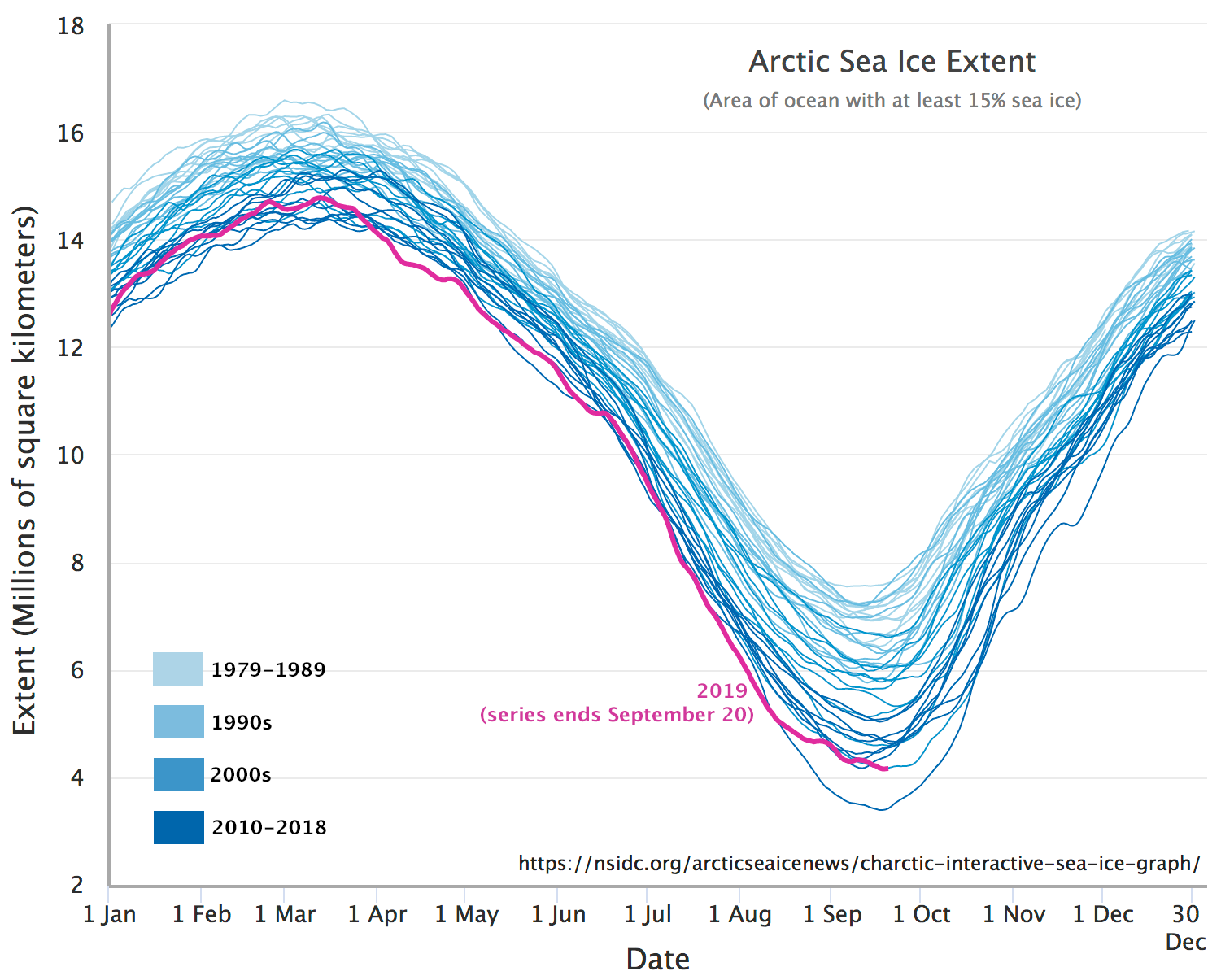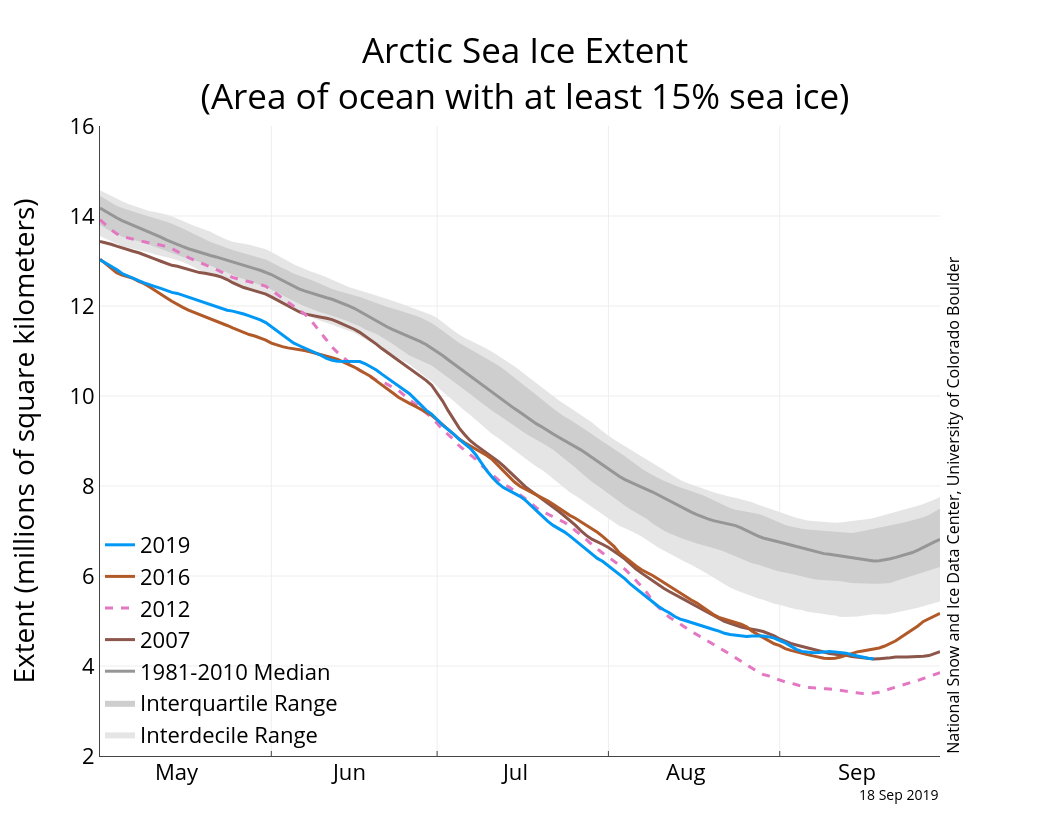Arctic sea ice has again reached its second-lowest minimum extent
In 2019 sea ice bottomed out in a three-way tie with 2007 and 2016 for the second lowest on record.

This year’s Arctic sea ice minimum is tentatively designated as the second-lowest in the satellite record, though in a statistical tie for that spot.
The National Snow and Ice Data Center on Monday said the ice reached its minimum extent last week, hitting an annual low of 4.15 million square kilometers.
[Arctic sea ice is close to its annual minimum extent — but that’s just part of the picture]
That is almost exactly the same as the minimum extents reached in 2007 and 2016. Those years had minimums that were nominally a bit higher than this year’s, according to NSIDC figures, but because the satellite measurements have a margin of error of 40,000 square kilometers, the three years are considered to be in a statistical tie, said the NSIDC, based in Colorado.
Each of those three years’ minimums fall far short of the record-low minimum of 3.39 million square kilometers set in 2012, but they are part of a long-term downward trend.
“The 13 lowest extents in the satellite era have all occurred in the last 13 years,” the NSIDC said in its statement.
The annual minimum is part of a year-round trend as well. Sea ice extent has been running far below average in other months, even in the winter, according to NSIDC measurements. Since April, it has been running fairly consistently at either the lowest or second-lowest levels in the satellite record, according to the NSIDC.
Sea ice extent is defined as the area where ice covers at least 15 percent of the ocean surface. The NSIDC uses a five-day average when it declares annual minimums.
The date of the minimum is slightly in the year later than normal. The 1981-2010 median date for the annual minimum is Sept. 14, the NSIDC said.
Another measurement also puts this year’s minimum at the second-lowest on record — though without tying with other years. According to satellite measurements by the Japan Aerospace Exploration Agency, or JAXA, Arctic sea ice extent dipped to slightly below 4 million square kilometers for three days. The JAXA daily minimum was on Sept. 16 at 3.96 million square kilometers.
The JAXA data is based on measurements taken from a different satellite than that used by the NSIDC, accounting for the slightly different figures, said Mark Serreze, director of the Colorado-based center.
It is possible that ice extent will fall further, but that would require an unusual wind or melt event such as those that occurred very late in the autumns of 2005 and 2010, the NSIDC said.

